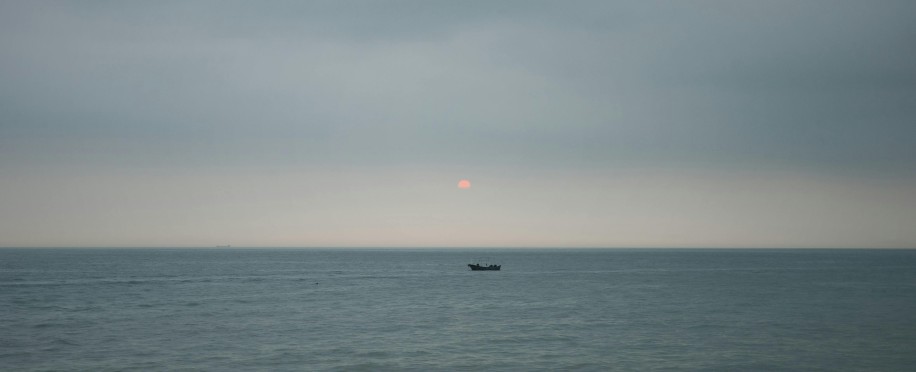Copyright © 2025 lmitac.com All Rights Reserved. Contact - Terms and Conditions - Privacy Policy - Quality Policy - Become an instructor - Vacancies - Sitemap
London Maritime Academy is a trade name for London Premier Groupversion: 2.9.0
London Maritime Academy is a trade name for London Premier Group

Posted on : 10/22/2025, 11:26:05 AM
The safety of the crew, the environment, the ship, and the cargo is one of the most important priorities for the International Maritime Organization (IMO) and all parties involved in the maritime industry.
That is why ship stability is highly important with all its elements, including gravity, buoyancy, and other internal and external center forces and dynamics applied across the ship body while shipping through the sea.
In this article, we will share an introduction to ship stability based on ship behaves at sea and static stability, the important types of vessel stability, the elements and criteria that impact ship stability, and the great benefits of maintained stability based on calculations and rules for the safety of all ships on sea.
Ship stability management is and any dynamic process done on the vessel to ensure the vessel can stay upright, balanced, safe, and efficient while shipping from one port to another. With full and effective control of the vessel’s weight distribution, deviation, naval vibration, cargo and bodies placement, ballast, and fuel.
Moreover, having developed ship stability not only helps in resisting accidents on the vessel's surface and with other vessels as well, but also improves the ship's performance, fuel efficiency, and comfort for the seafarers.
In other words, the ship's stability refers to keeping the ship steady and seaworthy under strong waves, winds, and any vertical or horizontal force or condition.
Having the needed skills in offshore engineering means being able to manage all ship stability conditions, including displacement, buoyancy, gravity, waves, and other initial applied forces to the vessel center.
Furthermore, knowing the different types of ship stability and how to handle each one and the attached requirements, topics, and modern situations is more than necessary to ensure the safety, development, and ability to reach its target.
When talking about intact stability, we are talking about the ability of ships to stay upright and balanced position in normal conditions, without any damage to their buoyancy center or gravity center. While reacting with stability to all tilted moments, like wind or waves.
This ship stability type covers or deals with the vessel's ability to remain floating and stable after its hull design or architecture is damaged. That is why the damage stability study is considered a critical safety factor that keeps the vessel safe during different emergencies like collisions or grounding.

The concept of ship stability includes many statical factors or elements that impact the vessel stability in intact or damaged situations, and the main elements to consider are:
Ballast is the term used to refer to the seawater stored in special tanks to balance the ship when it is not fully loaded, and maintain the required buoyant stability, draft, and trim for safe and enabled navigation.
GM is the international measuring code that indicates the vessel's stability level and ability to return to an upright position quickly after tilting due to an external force, like waves or wind. This naval number is calculated by measuring the distance between the ship's center of gravity and metacenter.
Trim is the difference between the depth of the ship's bow and stern in the water, which is important for ship stability, fuel efficiency, maneuverability, and overall vessel performance at all times.
The stress monitoring concept focuses on tracking the forces and pressures acting on the vessel's hull, caused by waves or cargo, while shipping, with a goal to prevent structural damage based on the set stress curves.
Weight distribution describes properly arranging cargo, fuel, and equipment to keep the vessel balanced, as uneven loading could impact buoyancy stability, gravity stability, and safety at sea during intact or damaged situations.
Based on the best marine engineering training courses in London, there are many examples and reasons why ship stability is highly important in the maritime industry.
Moreover, understanding ship stability for masters and mates is essential and requires London Maritime Academy (LMA) marine engineering training courses in one of the regional offices in London, Istanbul, Athens, Rotterdam, Hamburg, or Dubai.
Having proper ship stability management keeps the vessel steady despite surrounding challenges by reducing sudden tilts or rolls that can cause injuries, leading to a safer, more stable, and more comfortable working model and environment for everyone on board.
Maintaining effective ship stability prevents structural stress and damage to the hull, which helps the ship stay seaworthy under different weather and loading conditions, leading to savings on repairs and ensuring a good revenue level.
A well-balanced and stable ship responds more effectively to steering and maneuvering commands, which is crucial in controlling ships, especially in the case of collision avoidance and navigating safely through crowded or rough waters and high waves.
Ship stability is something that we cannot ignore, whether we are talking about intact stability or damage stability, as efficient ship stability means safety and the ability of the ship to operate in all conditions.
However, having the right marine engineering is essential to master ship stability for all ships with the needed buoyancy center and gravity center.